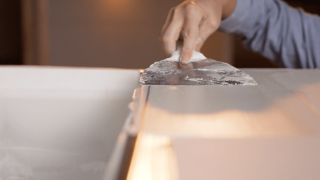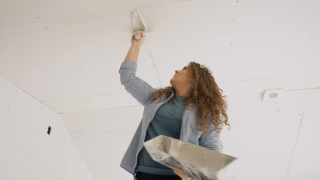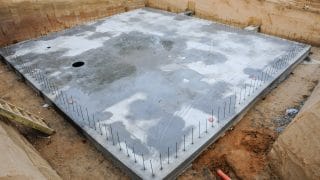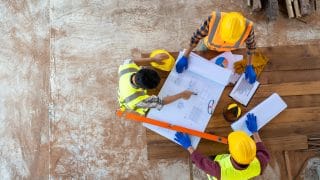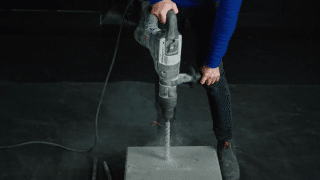Plumb, Level, Square, and True: What They Mean and How to Measure
Sep 25, 2020
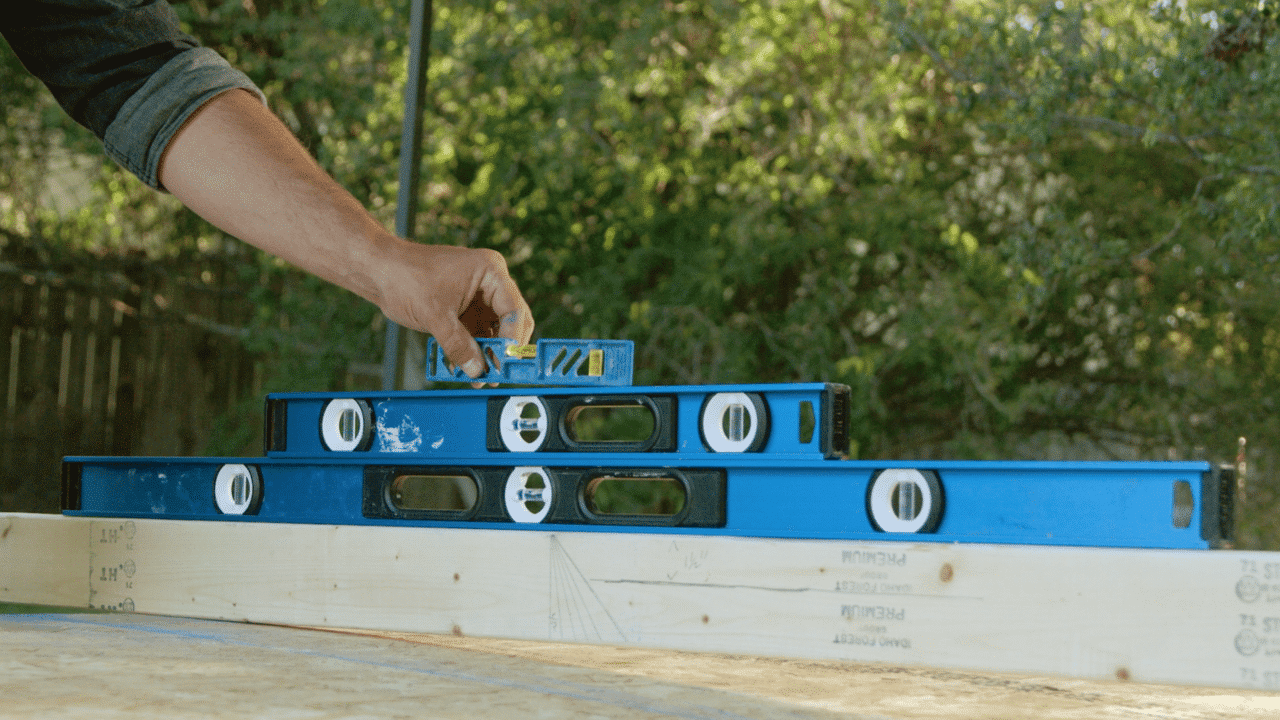
Straight lines and right angles are must-haves for any construction project, whether it’s a wall, door, window, or entire frame. But “straightness” only goes so far—you can have a line that is perfectly straight (that is, not bending or curving), but if it’s not oriented correctly, it can still result in slanted walls or a sloping floor.
That’s where level and plumb come in—both measure straightness, but with a different relationship to the horizon. “Level” refers to straightness side to side (horizontal), whereas plumb measures straightness up and down (vertical).
But what does all of this mean in practice? Read on to find out the definitions of level, plumb, square, and true, how they’re different, and how to measure for each.
What does “level” mean?
“Level” is what you call a perfectly horizontal line. Horizontal means side to side. To be level with the world means to be parallel with the horizon.
“Level” is also the name of the tool you use to determine whether something is horizontally straight.
What is a spirit or bubble level?
A spirit level—sometimes known as a bubble level, carpenter level, or a torpedo level (depending on size and shape)—is a tool that uses gravity to measure if something is level.
These levels have a vial of liquid with an air bubble inside that runs parallel to the body of the tool. When the tool is level with the earth, the bubble is exactly in the middle of the vial, often marked with a line. If the tool (and the surface it is measuring) is sloped or slanted in one direction, the bubble floats to the higher side.
How to use a spirit or bubble level
A spirit level is only one of the essential tools you’ll need on a construction site. Learn more about the most important construction tools—and how to use them safely—in MT Copeland’s online class, taught by professional builder and craftsman Jordan Smith.
Tip: When you are holding a level, make sure it is on or against a flat surface, such a wall or flat straight boards, to ensure accuracy.
You can also use spirit levels to check if something is plumb, as these tools measure both level and plumb. (More on that below.)
Other types of levels
- Water levels use plastic tubing and cylinders of water to measure level over longer distances than could be achieved with a simple bubble level.
- Laser levels use a laser beam of light, to check alignment. If you have to measure multiple lines, a laser level will make things easier than having to place a spirit level on each individual line. Laser levels work in all directions, so you can use them to measure level and plumb by pointing at whatever you are checking.
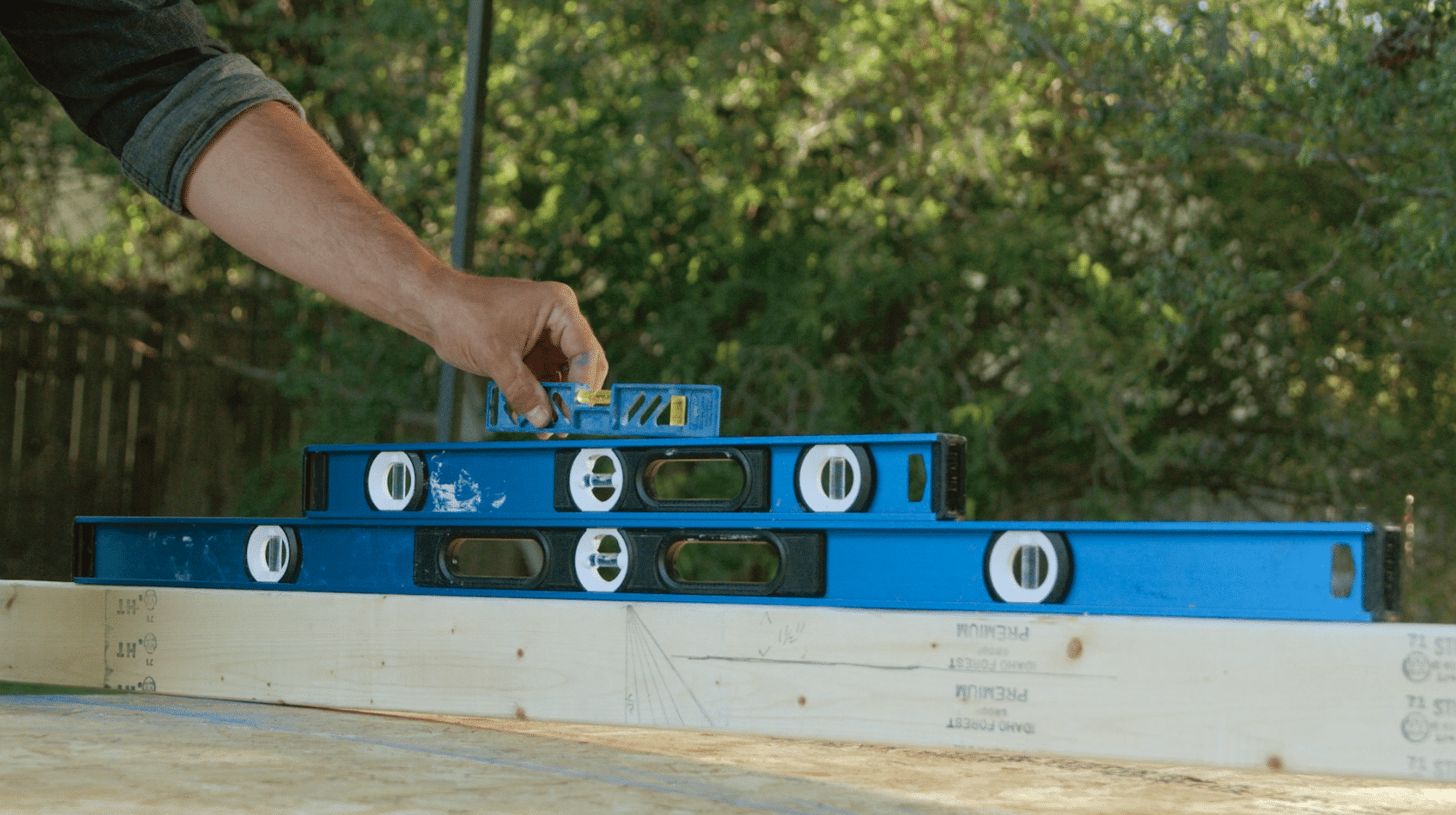
What does “plumb” mean?
“Plumb” is what you call a perfectly vertical line. Vertical means up and down. Something that is “plumb” runs perpendicular to the horizon—meaning that when it intersects the horizon, it makes a right (90 degree) angle.
Straight lines and right angles are must-haves for any construction project, whether it’s a wall, door, window, or entire frame. But “straightness” only goes so far—you can have a line that is perfectly straight (that is, not bending or curving), but if it’s not oriented correctly, it can still result in slanted walls or a sloping floor.
That’s where level and plumb come in—both measure straightness, but with a different relationship to the horizon. “Level” refers to straightness side to side (horizontal), whereas plumb measures straightness up and down (vertical).
But what does all of this mean in practice? Read on to find out the definitions of level, plumb, square, and true, how they’re different, and how to measure for each.
What does “level” mean?
“Level” is what you call a perfectly horizontal line. Horizontal means side to side. To be level with the world means to be parallel with the horizon.
“Level” is also the name of the tool you use to determine whether something is horizontally straight.
What is a spirit or bubble level?
A spirit level—sometimes known as a bubble level, carpenter level, or a torpedo level (depending on size and shape)—is a tool that uses gravity to measure if something is level.
These levels have a vial of liquid with an air bubble inside that runs parallel to the body of the tool. When the tool is level with the earth, the bubble is exactly in the middle of the vial, often marked with a line. If the tool (and the surface it is measuring) is sloped or slanted in one direction, the bubble floats to the higher side.
How to use a spirit or bubble level
A spirit level is only one of the essential tools you’ll need on a construction site. Learn more about the most important construction tools—and how to use them safely—in MT Copeland’s online class, taught by professional builder and craftsman Jordan Smith.
Tip: When you are holding a level, make sure it is on or against a flat surface, such a wall or flat straight boards, to ensure accuracy.
You can also use spirit levels to check if something is plumb, as these tools measure both level and plumb. (More on that below.)
Other types of levels
- Water levels use plastic tubing and cylinders of water to measure level over longer distances than could be achieved with a simple bubble level.
- Laser levels use a laser beam of light, to check alignment. If you have to measure multiple lines, a laser level will make things easier than having to place a spirit level on each individual line. Laser levels work in all directions, so you can use them to measure level and plumb by pointing at whatever you are checking.

What does “plumb” mean?
“Plumb” is what you call a perfectly vertical line. Vertical means up and down. Something that is “plumb” runs perpendicular to the horizon—meaning that when it intersects the horizon, it makes a right (90 degree) angle.
You can measure if something is plumb by using a plumb bob or a spirit or laser level.
How to use a plumb bob
A plumb bob uses gravity to help you align things properly. This tool consists of a weight (usually with a pointed bottom) that is connected to string (also known as a plumb line). With the help of the weight, the string follows the path of gravity and goes straight down from the top of what you’re measuring. That line will be perfectly perpendicular to the horizon, or “plumb.”
You can also use spirit levels to check if something is plumb, as these tools measure both level and plumb.
What does “square” mean?
“Square” refers to perfect corners. Corners should be at exactly 90 degrees, which means they consist of two perpendicular lines: one straight horizontal (level) line and one straight vertical (plumb) line. Perpendicular lines meet to create a right angle, which is what you should have at every corner.
To ensure that a corner is square, you can use a tool known as a steel square, carpenter square or framing square. This tool helps you measure and mark perfect 90-degree angles, also known as right angles.
What does “true” mean?
In construction, “true” is about everything being lined up correctly. Your lines should be perfectly vertical (plumb) and horizontal (level), and your corners should be exactly 90 degrees (square).
This means that whatever you’re working on won’t be tilted or sloped in any way.
Every element of your orientation must be exact. Nothing should lean in any direction. If just one corner or one line of what you’re building isn’t straight, then what you’re doing won’t be true.
MT Copeland offers video-based online classes that give you a foundation in construction fundamentals with real-world applications. Classes include professionally produced videos taught by practicing craftspeople, and supplementary downloads like quizzes, blueprints, and other materials to help you master the skills.



